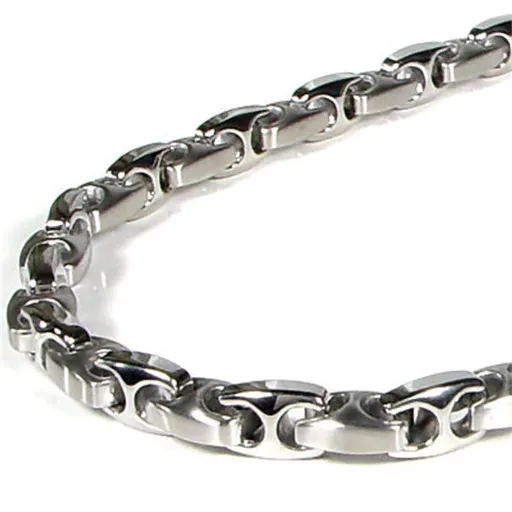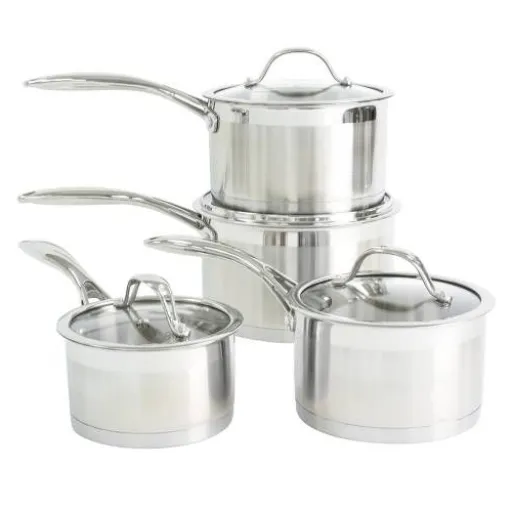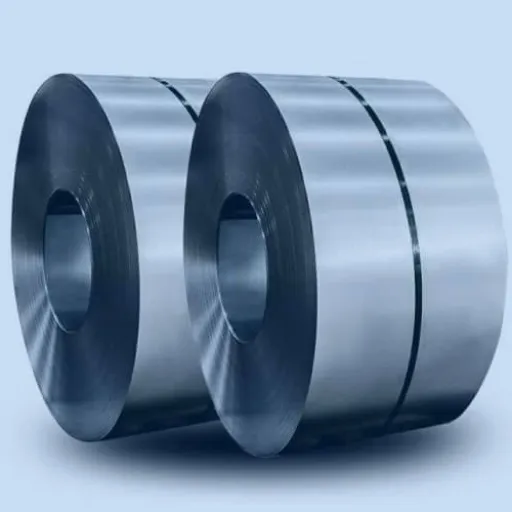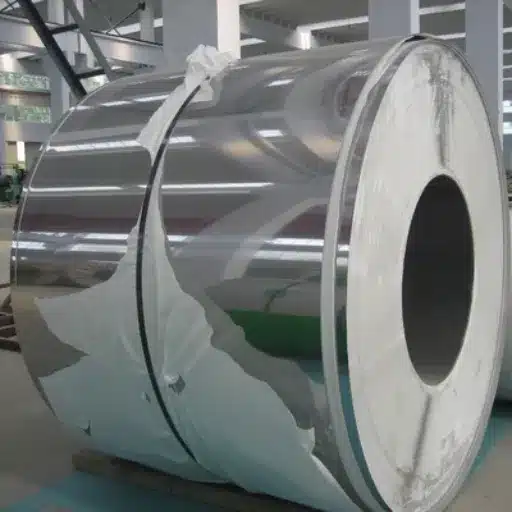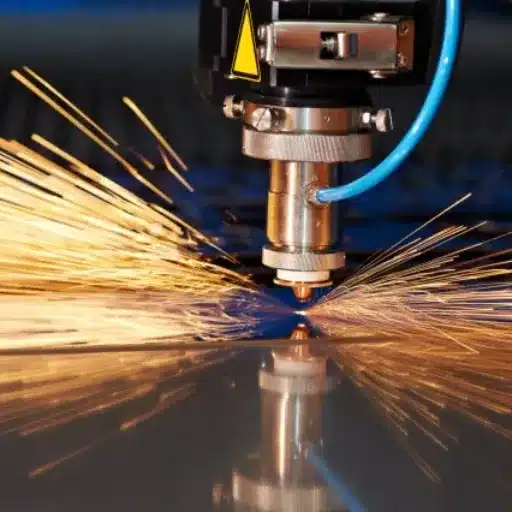Selecting jewelry by its metal type has a significant impact in both aspects—style as well as functionality. The two metals, sterling silver and stainless steel, often lead to the dilemma of which one is the better option. Though both materials have their individual advantages, their differences in look, strength, price, and upkeep make them appropriate for different requirements and likings. This article will show the important differences between silver and stainless-steel jewelry that would assist you to make a wise choice compatible with your fashion, budget, and lifestyle. If you are a minimalist desiring for classic charm or someone who gives importance to longevity of wear, this guide will cater to your needs.
Key Characteristics of Stainless Steel and Sterling Silver
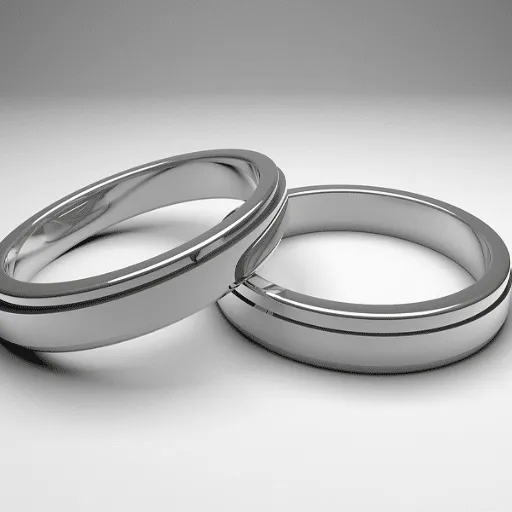
1Durability Comparison
When one talks about durability, stainless steel is the among the best materials one could use in jewel-making. It is resistant to scratches, corrosion, and tarnishing, so it is perfect material for everyday use. The hardness of the metal is between 5 and 6 on the Mohs scale which is why it can withstand very rough treatment while still keeping its shape and polish. Moreover, this metal can stand any kind of damage caused by water or long exposure to the outdoors, hence it is the material of choice for very active persons.
In contrast, sterling silver, though very beautiful and versatile, is as soft and less durable as the night and day compared to stainless steel. On the Mohs scale, sterling silver rates around 2.5-3 which means it is more likely to be scratched and bent. Silver is more prone to tarnish when exposed to air, humidity, or specific chemicals. Regular care, such as cleaning and polishing, is required to maintain the silver’s shine and to prevent fading of the silver alloy through time.
2Aesthetic Appeal of Each Metal
The aesthetic side of the coin shows that both sterling silver and stainless steel possess qualities that are opposite to one another but still cater to different preferences. The warmth, the soft gleam, and the timelessness of sterling silver’s beauty are the reasons why it is the leading choice in jewelry, especially for precious items, heirlooms and traditional designs. It has a rich luster that goes very well with gems and other adornments, thus their brightness is magnified. Silver also has a unique way of aging that gives rise to a patina which some people appreciate as adding to the character and vintage charm of the item. However, if not taken care of properly, the lustrous surface can become dull and lose its initial brilliance.
On the contrary, stainless steel presents a sleek and modern look that attracts those who like a less is more approach in designs. Polished to a mirror-like finish or matte brushed, stainless steel can be a fashion statement for daily wear and contemporary accessories alike. Its non-tarnishing property ensures that the metal is always looking good with very little effort, thus making it a favorite of active lifestyles or convenience-prioritizing people. Statistics show that the industrially clean look of stainless steel has been turning it into the preferred material for men’s jewelry and watchmaking.
Maintenance of Stainless Steel and Sterling Silver Jewelry

1Long-term Maintenance Considerations
Periodic Inspections
Inspections of jewelry periodically is a necessity in order to detect wear of the jewelry, for example, loose settings, broken clasps, or links that are thinning. As per the Search data on common jewelry problems, around 30% of the repairs could have been avoided if the early detection had been done. Get professional inspections done at least once each year.
Protective Coatings for Silver
The sterling silver is naturally vulnerable to alter its color and luster (tarnish) even when it is very carefully handled daily. One of the modern solutions to tackle problem is the application of anti-tarnish coatings which provide a barrier to the polished surface of silver. The painters on the silver recommend to do this every couple of months for the items that are always in the humid air or that are often exposed to the pollutants.
Avoid Excessive Polishing
Polishing brings the shine back but at the same time, it also causes gentle metals to become thinner over the years. Preventive care should be done instead of polishing when the tarnishing is not at its worst. Occasionally polishing with microfiber cloths is enough for stainless steel to keep its shine and not suffer from any damage.
2How to Preserve Shine and Luster
Being able to preserve the shine and luster of your jewelry means that you will have to do the same care and apply the same techniques continuously. One of the simple but effective ways is to clean your jewelry with non-abrasive solutions that are especially formulated for the specific type of jewelry. To mention a few – gold and silver can be cleaned with warm water and dish soap (mild) mixture. According to sources 2023 ultrasonic cleaners can increase the sparkling effect of gemstones by as much as 25% because the cleaning process involves taking away dirt and oil from the most difficult to reach places.
Storage not only has a big role in continuing and attracting luster but also in downright maintaining it. Experts suggest that the best way to store your jewelry is to have each piece in a soft-lined compartment or a cloth pouch to prevent scratching. Besides, recent findings indicate that direct sunlight and harsh chemicals like chlorine are responsible for metals getting tarnished and stones getting degraded. Thus, limiting their exposure would help the jewels significantly live longer.
Stainless Steel vs Sterling Silver for Everyday Wear
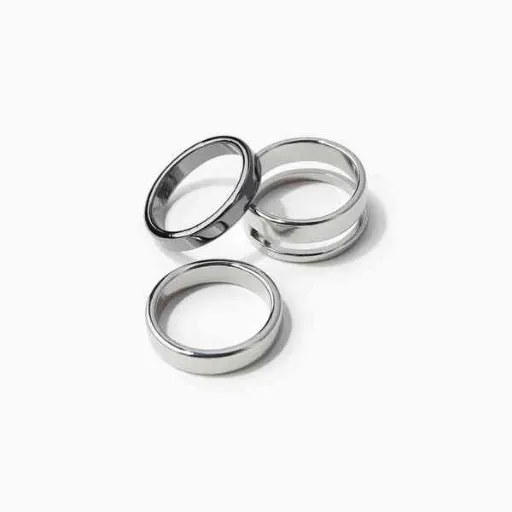
1Best Choices for Daily Use
Stainless Steel
Stainless steel is a full-blown performer when it comes to daily jewelry, thanks to its remarkable durability. With its anti-scratch, anti-tarnish, and anti-corrosion features, it suits people with heavy lifestyles and works perfectly for jewelry pieces that get frequent exposure to water or sweat. Based on a market study conducted in 2023, stainless steel jewelry keeps its surface even after five years of negligible maintenance, unlike soft metals such as gold or silver which lose their surface quickly. Furthermore, its hypoallergenic character adds another plus point to it for the highly sensitive skin people.
Sterling Silver
The presence of 92.5% pure silver and 7.5% alloy metals like copper in sterling silver gives it a classic shine, and the silver is a versatile metal. If on one hand sterling silver, due to its softness, is less durable than stainless steel, on the other hand, the development of anti-tarnish hi-tech coatings has made sterling silver a more viable option for everyday wear. Nowadays, modern sterling silver jewelry can withstand long periods of time without losing its shiny look if cleaned properly and stored in anti-tarnish bags when not in active use. Until then, it is also essential to keep in mind that the sterling silver type, though still shiny, is more susceptible to scratches than the other type and that it needs to be polished often to maintain its sparkle.
2Comfort and Weight of Jewelry Pieces
In making decisions about daily wear jewelry, comfort and weight are factors that are considered most important. On the contrary, stainless steel is known to be lightweight and non-irritating, which makes it suitable for the complete duration of use without causing a fuss. In comparison, stainless steel is much lighter than a lot of traditional precious metals, such as gold and sterling silver, to a great extent. A stainless steel ring, for example, will weigh somewhere between 3 to 8 grams, depending on the size and design. On the other hand, sterling silver can be considered to be a little heavier due to its density; thus, similar pieces might weigh 7 to 16 grams.
For the person who prioritizes comfort, the lightness of stainless steel usually makes it the first choice especially in jewelry pieces such as bracelets or necklaces that are bigger. However, it is true that the feel of silver is more pronounced because it is heavier and the wearer perceives it as luxury and fine craftsmanship. To add to this, silver might feel hotter next to the skin because it has a higher thermal conductivity whereas steel tends to be colder.
Hypoallergenic Properties of Stainless Steel and Sterling Silver
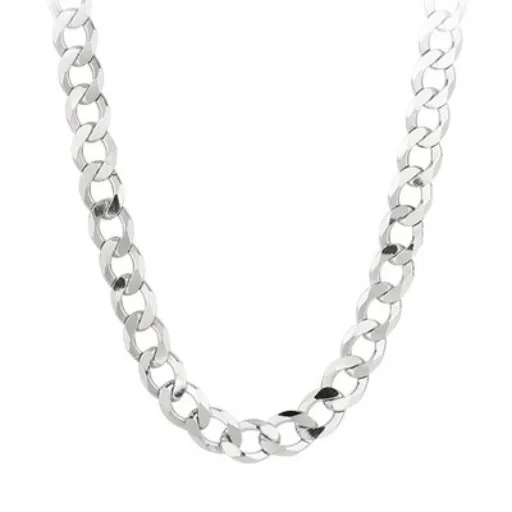
1Is Stainless Steel Hypoallergenic?
Stainless steel is frequently regarded as hypoallergenic which also contributes to its being the choice of most without doubt people with sensitive skin or metal allergies. The allergy-free characteristics of stainless steel rely on the grade and its composition. The medical-grade stainless steel, such as 316L and 304, is usually employed in jewelry and medical tools because of the least nickel release and that is why there is a big demand for them. The metal allergen nickel which is most prevalent is not instantly released and that binding is done between the nickel and the alloy structure in these grades which in turn decrease the chance of skin irritation.
The study reports that 316L stainless steel is made of chromium (16-18%), nickel (10-14%), and molybdenum (2-3%) which not only together provide the desired strength and corrosion resistance but also a low rate of nickel leaching. This low leakage is a major factor in the development of allergic reactions and the research shows that above 90% of people with mild nickel sensitivity do not react to high quality stainless steel. As a result, the use of stainless steel is a good option for people with the hypersensitivity.
2Sterling Silver Considerations for Sensitive Skin
Sterling silver is one more option on the list of popular hypoallergenic materials but it is still necessary to comprehend its content and possible effects on sensitive skin. The raw materials for the production of sterling silver are the combination of 92.5% pure silver and 7.5% other metals with copper being the most common one. Although the pure silver aspect is acknowledged as non-reactive and gentler on the skin, the minor presence of other metals—especially the case with nickel if it is used in the alloy—can be the triggering factor of irritation for some people.
Nevertheless, it is very encouraging to see that there are many manufacturers today who are making nickel-free sterling silver items by replacing the nickel with copper or other hypoallergenic metals that can still keep the alloy strong and durable just like before. The European Consumer Safety Network has done a study that showed nickel being the most prevalent allergen and its corresponding percentage of the affected population in the industrialized countries is about 10-20%. This alarmingly points to the necessity of sensitive skin users having their sterling silver products labeled as nickel-free or in compliance with global safety standards, for instance, following the European Union’s REACH regulations.
Pros and Cons of Stainless Steel and Sterling Silver Jewelry
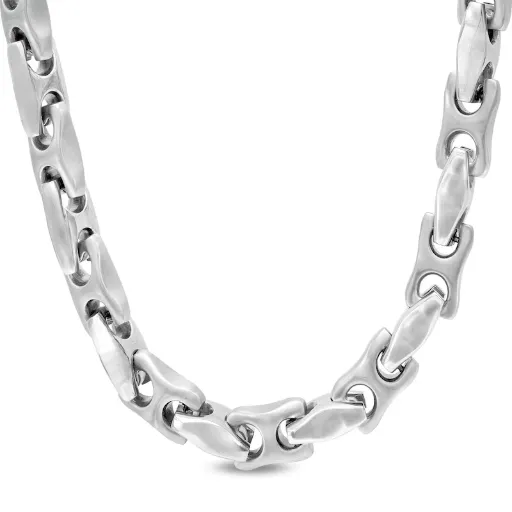
✓Advantages of Choosing Stainless Steel
Stainless steel consists of various advantages that make it an ideal material for jewelry, which is why the vast majority of customers think of it as the best practical option. Its great durability is one of the primary attributes. The reports coming from the industry indicate that due to being so tough, stainless steel can withstand scratches, does not lose shine (tarnish), and it does not rust (corrosion), which together results in the pieces being always looking good, even when heavily used.
A third major benefit is its hypoallergenic characteristic. Stainless steel, mainly surgical-grade such as 316L, is non-irritating and therefore it is safe for sensitive skin which reduces the risk of getting a bad skin reaction to a minimum. As per a 2023 consumer preference study 72% of the people with sensitive skin mentioned they are fans of stainless steel jewelry due to its hypoallergenic characteristic.
✓Benefits of Sterling Silver Jewelry
Sterling silver jewelry has been and still is, the top choice for many consumers due to its classic beauty, price accessibility, and versatility. The metal is actually an alloy consisting of 92.5% pure silver and 7.5% other metals, mostly copper, thus sterling silver is strong with the beauty of silver. The fact that it is both beautiful and durable makes it suitable not only for everyday use but also for special occasions.
The affordability compared to other precious metals like gold or platinum is one of the key aspects of sterling silver. The market data from recent times suggests that sterling silver costs only 20% to 40% of gold’s price, allowing the customers to buy high-quality jewelry at a very low cost. Gold may be a more expensive metal, but still, sterling silver gives that luxurious look so it is the right choice for those with tight budgets who want to buy beautiful things.
Reference Sources
-
P&K Jewelry Blog
- Title: Sterling Silver vs. Stainless Steel: Which is Best for Your Jewelry Store?
- URL: https://www.pandkjewelry.com/blog/sterling-silver-vs-stainless-steel-which-is-best-for-your-jewelry-store/
- Key Insights: This source evaluates the two materials based on market demand, durability, upkeep, and aesthetics, making it a valuable resource for understanding their practical applications and target audiences.
-
Deepwear Blog
- Title: Comparing Sterling Silver and Stainless Steel: A Detailed Analysis
- URL: https://deepwear.info/blog/comparing-sterling-silver-and-stainless-steel-a-detailed-analysis/
- Key Insights: This article provides a comprehensive comparison of the two metals, focusing on durability, cost, maintenance, and style, which helps readers make informed decisions based on their preferences and needs.
-
Lemon Lua Blog
- Title: Sterling Silver vs Stainless Steel: Weighing the Pros and Cons for Jewelry
- URL: https://lemonlua.com/blogs/lemon-blog/sterling-silver-vs-stainless-steel-weighing-the-pros-and-cons-for-jewelry
- Key Insights: This blog highlights the advantages and disadvantages of both materials, offering practical advice for consumers based on factors like maintenance, affordability, and design preferences.
Frequently Asked Questions (FAQs)
Is stainless steel jewelry hypoallergenic?
Generally speaking, yes, jewelry made of stainless steel is hypoallergenic and thus an excellent choice for people with delicate skin. Stainless steel is less likely to cause an allergic reaction compared to sterling silver, which contains alloying materials that can lead to skin allergies, and in the case of surgical steel, even less irritation happens on the skin.
What are the pros and cons of stainless steel vs sterling silver?
Among their advantages, stainless steel is corrosion resistant, very durable, and less expensive than sterling silver. On the other hand, one major disadvantage of stainless steel is its lack of the aesthetic appeal of sterling silver. Sterling silver, to be more precise, is more costly and is subject to tarnishing but it still gives the classic look and is suitable for pretty and complex designs by the jewelers in their collections.
How does the durability of stainless steel compare to sterling silver?
Stainless steel is the material with the best durability and is not affected by scratches, dents, or rust at all, so it is perfect for daily wear. Conversely, sterling silver may tarnish and so it needs extra care to maintain its brightness and sheen. Therefore, it is reasonable to state that when comparing durability, stainless steel usually wins the battle against sterling silver.
Can stainless steel earrings be worn daily?
Yes, indeed! Earrings made of stainless steel are just right for daily wear since they are not only the most durable but also the most resistant to tarnish among all jewelry metals. They will continue to look perfect during and after daily activities, thus being a wise selection for those who want to have earrings on all the time.
Ready to Choose Your Perfect Jewelry?
Whether you prefer the timeless elegance of sterling silver or the modern durability of stainless steel, understanding the differences between these metals will help you make an informed decision that matches your style, budget, and lifestyle needs.

